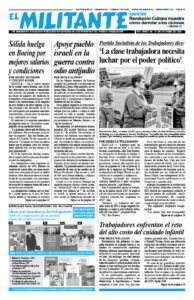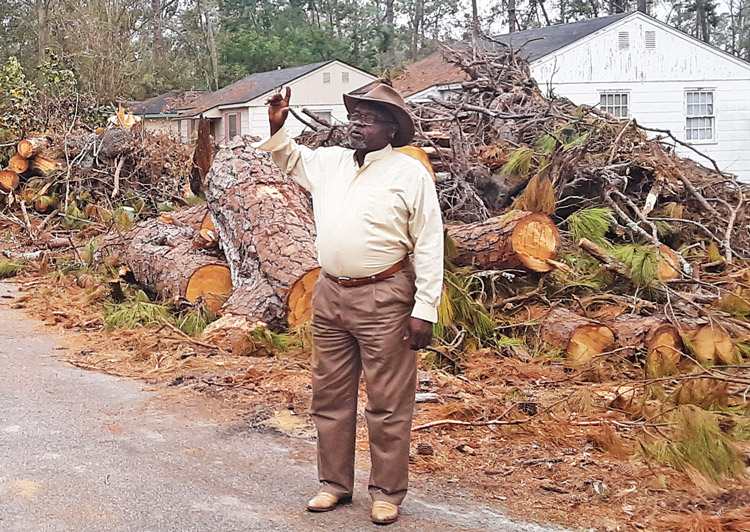VALDOSTA, Ga. — “Trees are down everywhere. People have been without power for days. Many haven’t had water,” Willie Head, who has a small farm near here, told Militant correspondents Sam Manuel and me Oct. 6. We were driving through neighborhoods in this south Georgia city near the Florida state line and the devastation caused by Hurricane Helene was evident block after block, as well as along roads in nearby rural areas.
Head took us to one of the hardest-hit areas in Valdosta to talk with several people in a predominantly Black working-class area of small houses built in the 1950s. Ten days after being battered by heavy rains and wind gusts of over 100 mph, working people still face the task of cutting up and removing the felled trees, many of which are still on their roofs. Looking down the streets, huge tree trunks are piled up in front of houses.
Val Delaney and others who talked to us said that Georgia Power told them they wouldn’t come out to restore service until the trees are cut up. And it’s “on you to figure out how.”
“Some guys came from Mississippi and elsewhere to help cut the massive trees,” Delaney said. “They said, ‘We gotta help these people.’ Many of the Latinos went around helping neighbors,” two examples of working-class solidarity in the face of government inaction and disdain.
People who could afford it paid up to $1,000 for generators to get light and power in their homes, and had to spend hours trying to find gas to keep them running. The news reported 1,000 transformers in areas hit by the hurricane were still down.
Delaney showed us the house where one of her neighbors was killed during the storm when a big tree fell through the roof while she was asleep. The tree is still there. A teenage neighbor was killed when he stepped on a downed power line as he ran out of his house in fear of falling trees. So far, a reported 33 people have died in Georgia.
Head, along with other farmers in south Georgia, is dealing with toppled trees and damage to his home, fences and other farm structures. While Head didn’t suffer any crop loss, many other family farmers there suffered irreparable damage to their crops and their livelihood.
A representative of FEMA came to Head’s farm in Pavo, some 30 miles west of here. He told Head they only cover damage to his home, that they need documentation of the damage, and they would need to send out another agent to document the documentation — another example of the obstacles workers and farmers face from government bureaucracy. FEMA told Head he would have to contact a different agency, the U.S. Department of Agriculture, to deal with damage to his farm.
Fields and fields of cotton and peanuts dot the roads between Pavo and Valdosta. Many cotton vines were damaged by the storm. When peanut vines get wet, a farmer’s harvester won’t work. Up to 30% of the peanut crop is ruined.
Delaney and others told us they got little warning the storm was headed their way. “There needs to be a way to get the information out when a storm is coming,” Head said. Nothing was done to evacuate people.


